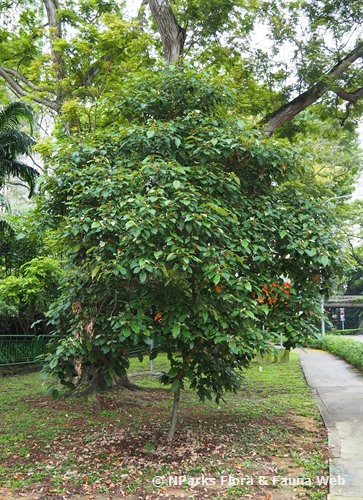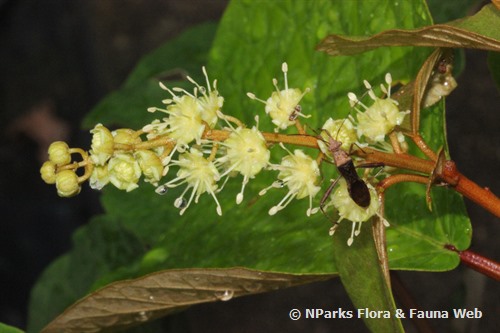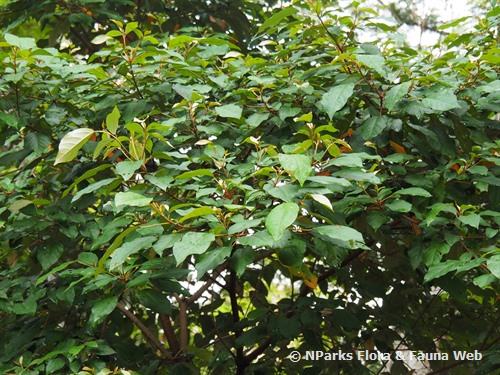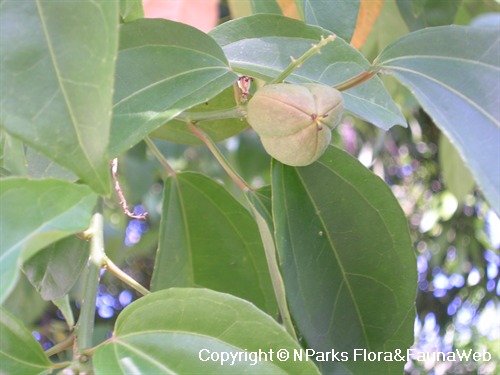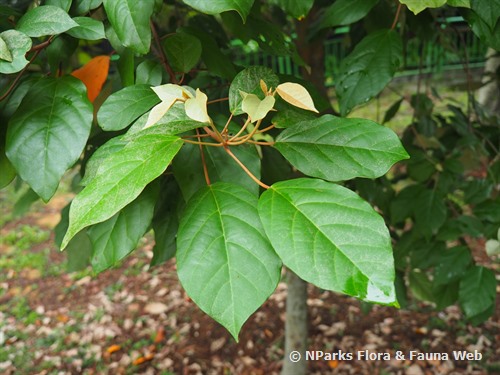
Name
Classifications and Characteristics
| Plant Division | Angiosperms (Flowering Seed Plants) |
|---|---|
| Plant Growth Form | Tree |
| Mode of Nutrition | Autotrophic |
| Maximum Height | 21 m |
Biogeography
| Native Distribution | India, Sumatra, Thailand, Peninsular Malaysia, Singapore, Brunei, the Philippines, Borneo, Java, Sulawesi, Lesser Sunda Islands, and the Moluccas |
|---|---|
| Native Habitat | Terrestrial |
| Preferred Climate Zone | Tropical |
Description and Ethnobotany
| Growth Form | It is a tree up to 21 m tall. |
|---|---|
| Foliage | Its spirally arranged, long-stalked leaves have papery leaf blades that are elliptic or egg-shaped, green above, silvery and covered with hair below, and 14-20 by 6-11 cm. |
| Flowers | Its flowers are green-white-yellow, about 4 mm across, and grow in flowering shoots that are 12-25 cm long. |
| Fruit | Its densely hairy fruits are brownish-golden, about 12-16 by 12-16 mm. Its flattened seeds are 10-11 by 7-8 mm. |
| Habitat | It grows on clayey to sandy soil in forests, rocky streams, and roadsides, up to 400 m altitude. |
| Etymology | Greek kroton, a tick, referring to the seed’s resemblance to ticks; Latin argyratus, silvery, referring to the leaf blade colour of this species. |
| Ethnobotanical Uses | Others: Its wood is heavy and hard, seasons well and is suitable in house construction. In the Andaman Islands, the wood is a valuable firewood. Its seeds yield an oil used in lamps. |
Landscaping Features
| Landscape Uses | Suitable for Roadsides, Parks & Gardens |
|---|
Plant Care and Propagation
| Light Preference | Full Sun, Semi-Shade |
|---|---|
| Water Preference | Moderate Water |
| Plant Growth Rate | Fast |
Image Repository
Others
| Master ID | 1959 |
|---|---|
| Species ID | 3251 |
| Flora Disclaimer | The information in this website has been compiled from reliable sources, such as reference works on medicinal plants. It is not a substitute for medical advice or treatment and NParks does not purport to provide any medical advice. Readers should always consult his/her physician before using or consuming a plant for medicinal purposes. |

